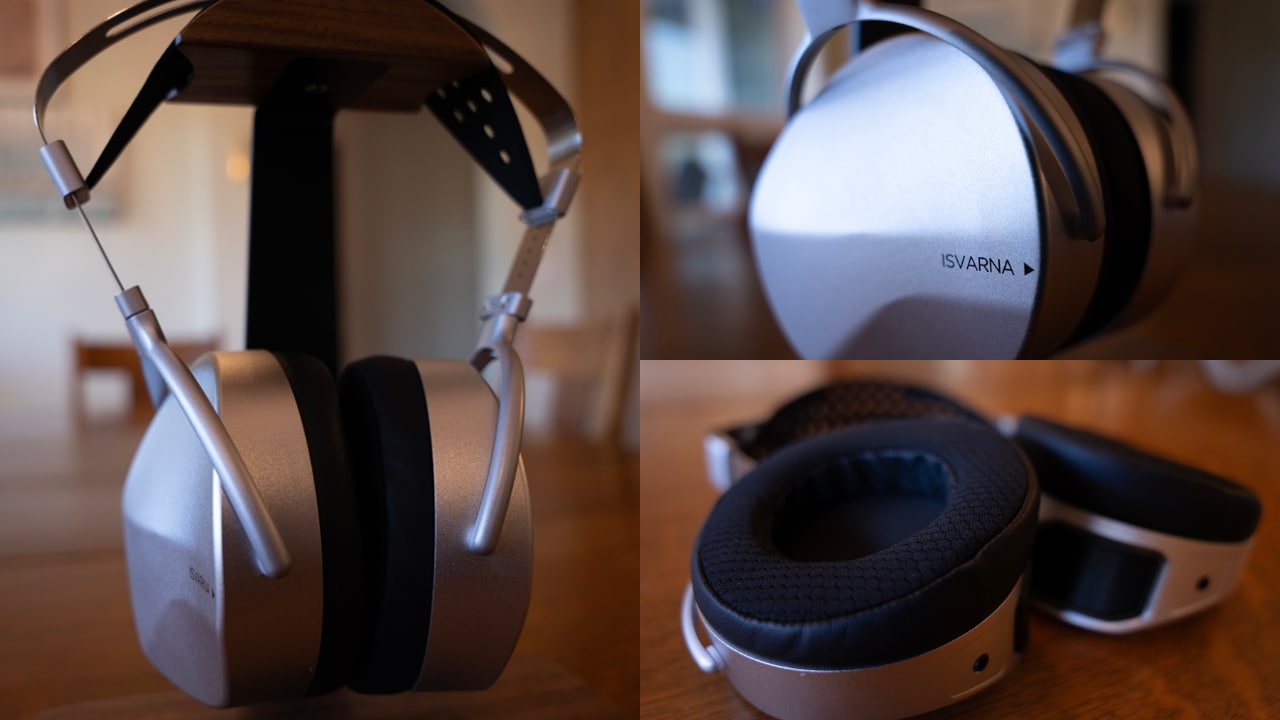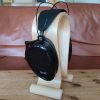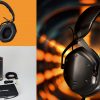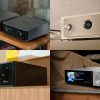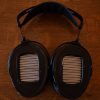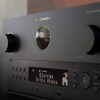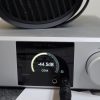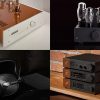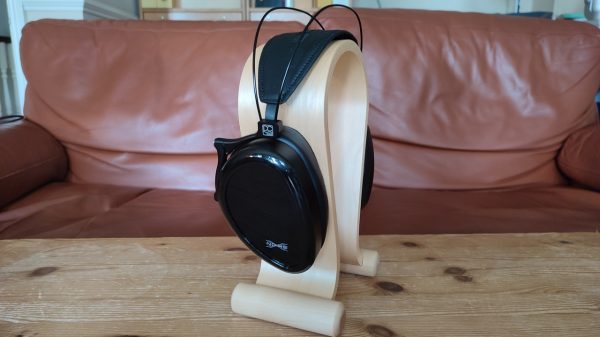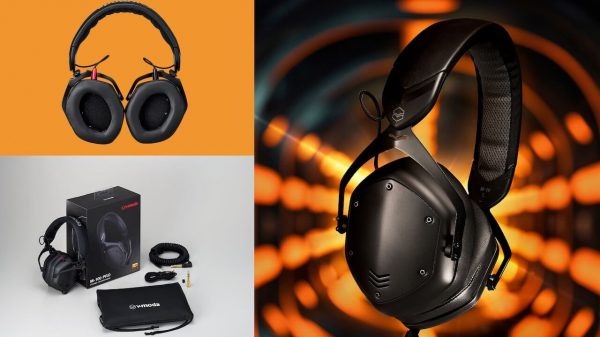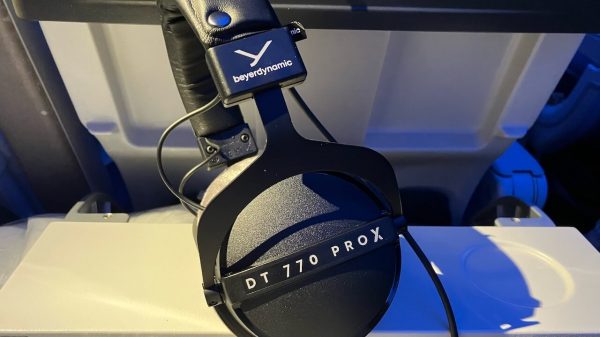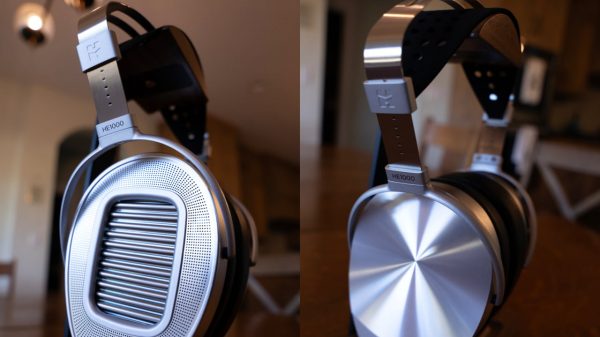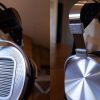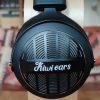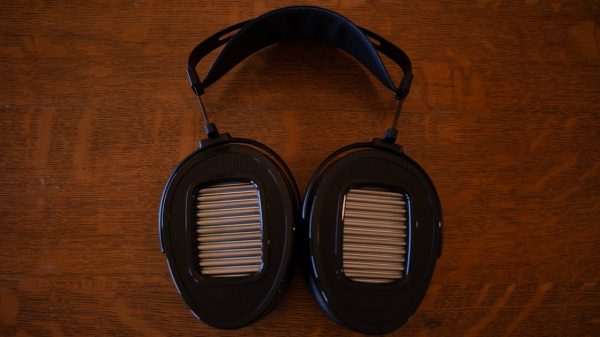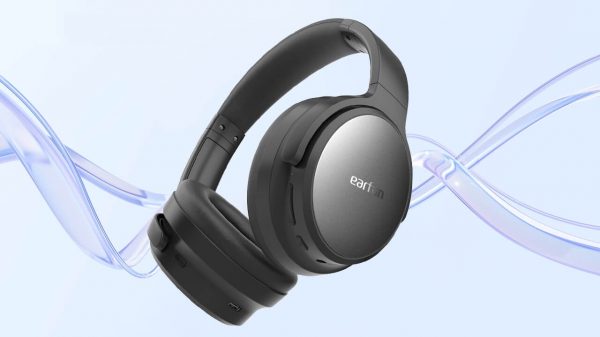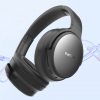HiFiMAN has built its legacy on open-back planar magnetic headphones known for exceptional clarity and detail, but its closed-back efforts have often lagged behind. The R10 stirred interest, and the Audvina showed promise, but neither fully cracked the code. Enter the HiFiMAN Isvarna—a bold new dual-driver hybrid that aims to change the brand’s closed-back narrative for good. With serious engineering under the hood and a focus on bass impact without sacrificing resolution, the Isvarna marks a significant step forward.
That sets the stage for one of HiFiMAN’s most ambitious projects to date: This semi-closed headphone aims to fuse the lightning-fast detail of a planar magnetic driver with the punchy low-end power of a dynamic driver. While hybrid designs have long been common in in-ear monitors, over-ear headphones typically stick to a single driver—adding more drivers ramps up complexity exponentially, regardless of type.
Priced at $2,899 MSRP, the Isvarna is currently holding firm at list price across most retailers, unlike many HiFiMAN models that often drop below MSRP quickly. This puts it shoulder to shoulder with heavy hitters like the Kennerton Rognir, ZMF Verite Closed, Focal Stellia, and Dan Clark Aduio E3 and Ether Flow C. Though none of those competitors use hybrid driver setups, they’re all exceptional headphones in their own right, making the Isvarna’s position a challenging one. In this second listen to these innovative cans, it’s clear that HiFiMAN needs to deliver more than just a unique driver combo to truly stand out in this tough market.
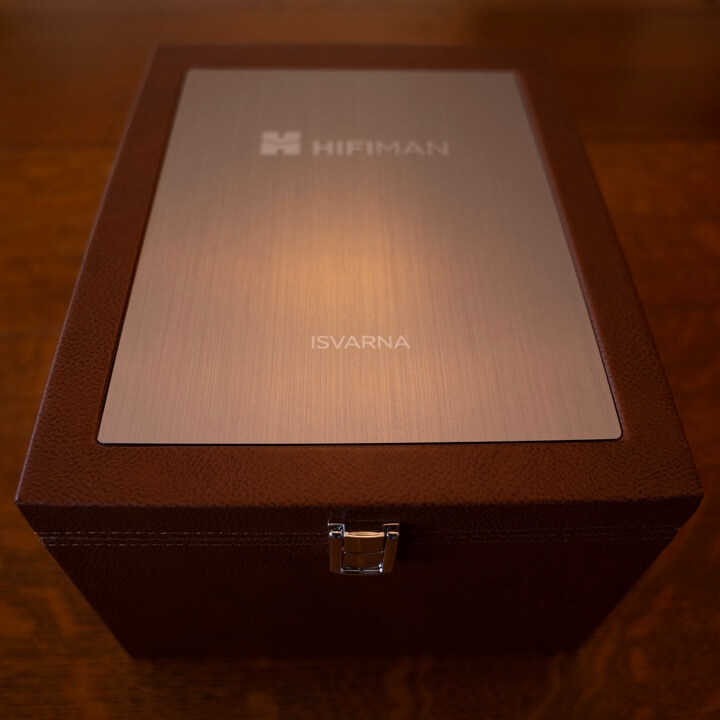
Unboxing and Premium Design of HiFiMAN Isvarna Closed-Back Headphones
The Isvarna arrives securely packed in a presentation box, nestled against silk-like padding that cushions and protects the headphones. Tucked neatly in a center cut-out are three detachable cables, terminated with 3.5mm, 6.35mm, and balanced XLR connectors respectively. Alongside the headphones, you’ll find a manual, warranty card, and a detailed insert explaining the hybrid driver design — the full kit, ready to roll.
The headphones themselves carry several signature HiFiMAN design cues, mixed with influences from elsewhere. The headband and suspension system are pure HiFiMAN: a sturdy steel frame supports a leather suspension band featuring eight adjustment notches on each side. Having recently reviewed the Susvara and HE1000 Unveiled, it’s clear the Isvarna shares its headband and suspension with those models, differing only in the color of the leather band. While lower-tier HiFiMAN headphones use a solid leather band, the Isvarna sports the perforated, single-layer leather design found on flagship models—cementing its place near the top of the lineup.
The ear cups mark a notable departure from the typical teardrop shape found on most HiFiMAN models, instead drawing clear inspiration from the earlier R9, itself a nod to the legendary Sony MDR-R10. Constructed from brushed aluminum, the cups are roughly the same size as those on the Susvara but widen from front to back to accommodate the dynamic driver. At first glance, the cups appear round, but a closer look reveals subtle folds and contours that add visual interest and functionality.
Cable connections sit at the bottom of each cup, just ahead of a vent designed to help equalize pressure around the dynamic driver. The cups are clearly labeled with an arrow above the Isvarna nameplate to indicate the front, while left and right markers are discreetly placed inside the gimbals. The ear pads themselves are a hybrid design, combining leather on the sides with a cloth-facing surface, continuing HiFiMAN’s theme of blending materials for comfort and performance.
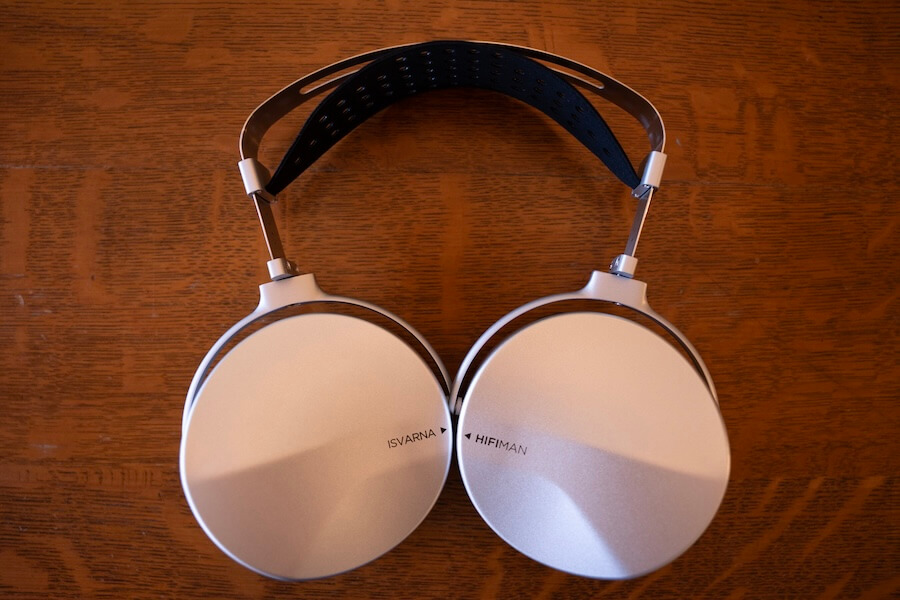
Unique Hybrid Driver Design Tackles Planar Magnetic Bass Limitations in the HiFiMAN Isvarna
Internally, the Isvarna stands out as one of the few headphones employing multiple drivers—a rarity in the over-ear category. While multi-driver setups are common in in-ear monitors due to space constraints, over-ear headphones typically avoid this complexity because crossovers introduce phase issues, artifacts around crossover frequencies, and can narrow sound dispersion. These factors complicate design and often outweigh the benefits, making single-driver solutions simpler and more effective for most over-ear headphones.
The core challenge the Isvarna addresses is the bass performance of planar magnetic drivers. Delivering impactful, visceral low frequencies requires moving large volumes of air—something that demands both a large surface area and significant diaphragm excursion. Planar drivers excel in surface area but are physically limited in excursion because the diaphragm is tightly suspended between magnetic arrays. This limitation is why planar drivers in larger audio applications often handle midrange and treble, while dynamic drivers provide bass (MartinLogan’s hybrid speakers are a prime example).
Headphone manufacturers have wrestled with this problem for years, experimenting with passive solutions and hybrid designs that pair the speed and clarity of planar drivers with the low-frequency authority of dynamic drivers. Audeze’s recent SLAM technology exemplifies a passive method to augment bass, while the Isvarna takes an active approach—integrating a dedicated dynamic driver alongside its planar magnetic driver to deliver richer bass impact.
HiFiMAN remains tight-lipped about the exact driver specifications, but clues emerge based on its place in the lineup. The planar driver likely resembles the design found in the Audvina and shares shape similarities with the R10P driver. The dynamic driver’s size is less certain, but the vent dimensions and cup depth suggest something between 40mm and 50mm. Official specs list a nominal impedance of 16Ω and a sensitivity of 93dB/mW, along with an impressive frequency response spanning 6Hz to 60kHz. While the impedance is relatively low, the moderate sensitivity means the Isvarna demands a powerful amplifier to truly shine.

Comfort & Fit: Well-Balanced but Not Isolation Champions
Weighing in at just over 460 grams, the HiFiMAN Isvarna doesn’t qualify as a lightweight headphone. However, thanks to the well-engineered suspension headband, that weight is evenly distributed across the head, making long listening sessions surprisingly comfortable. The adjustable suspension offers ample range, allowing most users to find a secure and personalized fit. I experienced no discomfort wearing glasses—a common pain point for many—and overall comfort was solid for extended use.
That said, the Isvarna’s semi-closed design and venting mean it leaks a noticeable amount of sound. The ear pads, while designed to enhance bass response, don’t provide the kind of isolation found in many fully closed-back models. With no music playing, I could easily hear my keyboard clicks through the headphones, and any physical contact with the Isvarna translates immediately to audible noise. Running a finger across the gimbals or even lightly touching the headband transmitted surprising amounts of sound to my ears.
Ambient noises from outside the headphones also bleed in due to the venting and pad design. Because of this, the Isvarna is best suited for quiet, stationary listening environments where external distractions and handling noises won’t interfere with the experience.
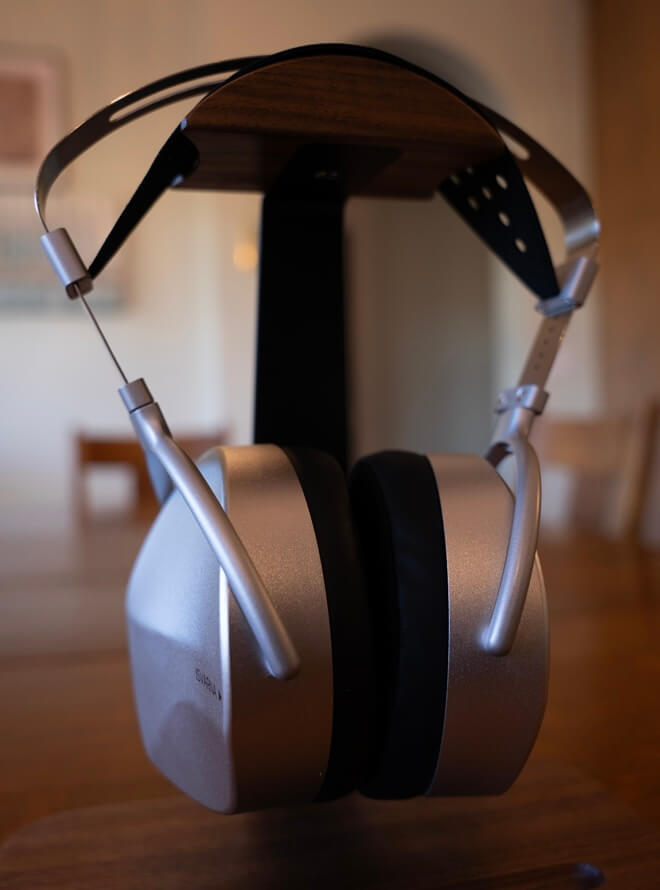
Listening: Powered Rigs Shine While Portability Remains Questionable
Most of my listening sessions with the Isvarna were powered by either the RME ADI-2 BL or the Pass HPA-1 amplifier. Both delivered the clean, potent amplification these headphones demand. I also tested the Isvarna with the Astell&Kern KANN Ultra DAP for portable use, but given the power requirements and the headphones’ sensitivity to environmental noise and handling sounds, I remain skeptical about their practicality on the go. The Isvarna truly shines in quiet, controlled settings with a powerful source.
Bass: Big, Bold, and Surprisingly Well-Behaved
Starting with the obvious — the Isvarna was built to deliver bass that grabs you by the collar and doesn’t let go. And yes, it absolutely does that. The sub-bass packs a satisfying presence and rumble without sliding into mushy territory, gaining texture and clarity as it rises above 50Hz. Tracks like Information Society’s notoriously bass-boosted “Walking Away” become a showcase for the Isvarna’s deep-low prowess, where bass isn’t just heard—it’s felt reverberating through your skull.
But it’s not all brute force. The Isvarna keeps its bass in check with impressive control. Take Duran Duran’s orchestral remix of “A View to a Kill” from Beside Ourselves, the attack hits hard and fast, but the decay cuts off sharply enough that the pounding bass doesn’t muddy the melodic lines weaving through the lower mids. In other words, the Isvarna’s bass isn’t a bull in a china shop; it knows when to punch and when to back off, which is a rare feat in bass-heavy hybrids.
Overall, the bass delivers the visceral punch you’d expect from the dynamic driver, but what surprised me was its natural tonality—something listeners might not be braced for. Where the Isvarna truly impressed was in handling large orchestral arrangements: instruments came through clean, well separated, and thoughtfully voiced without any gaps or exaggerated emphasis.
I braced for crossover headaches somewhere just below 500Hz, but the transition between dynamic and planar drivers is handled with finesse. Voices and instruments that straddle that frequency boundary maintain good timbre and clarity, with no hint of muddiness or disjointedness. Placing the crossover this low ensures the dynamic driver’s sub-bass recedes by about 1kHz, leaving the planar driver to flex its midrange and treble muscles where it excels.
The one caveat? Without a powerful enough amplifier, the lows lose some of their grip and feel hollow. I noticed this using the Auris Euterpe, which offered a clean presentation but lacked the punch and engagement that a heftier amp like the Pass HPA-1 delivers. So yeah, the Isvarna demands juice. Skip the power, and the bass performance drops from showstopper to wallflower.
Midrange and Treble: Clear Planar Texture with a Tasteful Treble Restraint
The midrange delivers classic planar clarity and texture, though it plays a supporting role rather than taking center stage. It’s not recessed by any means, but the real stars here are the sub-bass and the lower treble regions.
Lower vocals carry solid weight and texture, with baritone legends like Sinatra and Johnny Cash showcased beautifully. Cash’s haunting emotion on “Hurt” comes through with palpable sincerity. Moving up, Jon Anderson’s tenor on “The Gates of Delirium” is lighter as expected but still cuts through complex arrangements cleanly. Guitars range from gritty growls to pristine tones, highlighting both raw energy and artistic nuance. Strings bring good vitality, with higher strings just a touch forward of the lower ones. Higher voices similarly lean slightly forward but stop well short of harshness or nasal territory.
The lower treble aligns with a gentle lift through the upper mids, providing crisp percussion attack that balances the big bass. This region is emphasized but mellows out above 5 kHz, preventing vocals and horns from becoming strident. Cymbals come through clean but with a bit less sparkle and energy due to this mid-treble dip—some listeners might find them a tad polite. There’s enough air at the very top to keep the soundstage from feeling boxed in, though sparkle is somewhat limited.
Overall, the treble strikes a careful balance—enough energy to complement the lows without causing fatigue, unless you crank the volume. I found the Isvarna more enjoyable around 75dB listening levels; push it to 85dB and the top-end starts to wear thin, making longer sessions less comfortable.
Soundstage: Cohesive Imaging with Impressive Dimensionality
Soundstage is often the Achilles’ heel of multi-driver headphones. When crossovers aren’t handled properly, instruments that span frequencies can sound disjointed—like the bottom half of a cello is coming from one place and the top half from another zip code. Add the potential complications of a semi-closed design, and you’ve got a recipe for muddled spatial cues, reflections, and imaging weirdness.
Fortunately, the Isvarna dodges those bullets. Stage size is generous, with width and depth evenly matched and a bit of verticality that gives vocals space to rise above a guitar or keyboard in the mix. Instrument separation is crisp, even with dense arrangements. Imaging is tight and convincing across the frequency range, with no sign of instruments splitting across the crossover point. It all feels like one coherent stage—no multiple origin points, no sonic Frankenstein moments. Just a clean, natural presentation that holds together remarkably well for a hybrid build.

Real-World Pairing: Power-Hungry but Picky About Gain
On paper, 16Ω and 93dB/mW doesn’t scream “amp killer,” but don’t let the spec sheet fool you—the Isvarna wants real current to come alive. You’ll get sound out of just about anything, sure, but to unlock its full dynamic potential and bass authority, you’ll need an amp with some muscle behind it.
That said, high gain isn’t always your friend. I encountered a faint hiss on several sources when using high gain, most noticeably on the Astell&Kern KANN Ultra. Mid-gain proved to be the sweet spot there—enough drive without the noise floor creeping up.
Pairing with tube hybrids like the Auris Euterpe or Feliks Elise brought a touch of warmth and liquidity to the mids, which some might prefer, though there is a slight trade-off in high-frequency resolution and transient bite. For those who want to hear everything the planar driver can do, a clean solid-state amp is the way to go. The RME ADI-2 Pro FS R Black was especially well-matched, balancing control, detail, and drive without coloring the sound or choking the bass.
The Isvarna is revealing enough to expose weaknesses upstream, so it rewards thoughtful pairing. Power is essential—but finesse matters just as much.

The Bottom Line: A Big Swing from HiFiMAN—and a Mostly Solid Hit
The Isvarna delivers on HiFiMAN’s ambitious promise of a hybrid driver, quasi-closed-back headphone with real-world musicality and technical execution. It’s proof that the brand isn’t just recycling its planar playbook—it’s experimenting, taking risks, and pulling off something fresh. Sure, the Isvarna isn’t a true closed-back in the isolation sense, but for a design this open-sounding and pressure-balanced, we’re not complaining. More importantly, HiFiMAN managed to make the crossover mostly vanish in practical use, and that’s a win by any technical measure.
This isn’t a sterile, studio-reference kind of listen. It’s lively, bass-rich, and has just enough upper-mid and lower-treble energy to keep things exciting without tipping into fatigue—at reasonable volumes, anyway. The W-shaped tuning is well-judged, the technical performance is impressive, and the sound is fun. Audiophile fun. That matters.
As for value? At $2,899 MSRP, it’s not an easy sell—but it’s not out of line either, given what’s under the hood. You’re getting planar refinement, hybrid dynamics, and legitimate engineering that competes with some of the best high-end closed (or semi-closed) designs from Audeze, Focal, and ZMF. It’s not for the budget-minded, but if you want detail, slam, and a unique tech story in one headphone, the Isvarna holds its own.
It won’t be for everyone. But if you’ve been hunting for a hybrid headphone that does more than check boxes—something with guts, nuance, and actual sonic ambition—this might be your next leap.
Pros:
- Visceral bass impact without sacrificing clarity or control
- Planar mids and highs offer excellent texture and detail
- Surprisingly cohesive crossover performance
- Comfortable for long listening sessions, even with glasses
- Hybrid design solves a real bass limitation with planar drivers
Cons:
- Any contact with the cups, gimbal, or cable is audibly transmitted to the listener—distracting in some settings
- Demands a powerful amplifier for full performance. Low sensitivity and low impedance can be deceptive
- Sound leakage in both directions limits use to quiet, controlled environments
Where to buy:
Related Reading:

